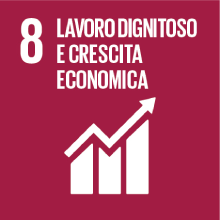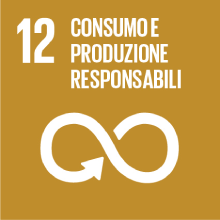HISTORY OF INNOVATION
- Anno accademico
- 2022/2023 Programmi anni precedenti
- Titolo corso in inglese
- HISTORY OF INNOVATION
- Codice insegnamento
- EM7030 (AF:386009 AR:214450)
- Modalità
- In presenza
- Crediti formativi universitari
- 6
- Livello laurea
- Laurea magistrale (DM270)
- Settore scientifico disciplinare
- SECS-P/12
- Periodo
- 3° Periodo
- Anno corso
- 1
- Sede
- VENEZIA
- Spazio Moodle
- Link allo spazio del corso
Inquadramento dell'insegnamento nel percorso del corso di studio
Risultati di apprendimento attesi
2. Gli studenti distinguono e riconoscono l'esistenza e le dinamiche di diversi tipi di innovazione; riconoscono le componenti sociali, istituzionali e tecniche del processo di innovazione e la loro interazione.
3. Gli studenti spiegano e sintetizzano come funziona l'innovazione tecnica e sono in grado di far riferiemento con cognizione di causa e con riferimento a esempi concreti alle teorie della costruzione sociale della tecnologia (SCOT) e dei sistemi di innovazione.
4. Gli studenti distinguono il ruolo delle istutuzioni nel promuovere o rallentare l'innovazione, discutono criticamente casi di studio storici e contemporanei
5. Gli studenti sono in grado di ricostruire e formulare ipotesi riguardo le diverse strategie innovative che imprese e brand hanno adottato nel corso della loro storia, riguardo a contnuità e discontinuità, analogie e differnze
6. Gli studenti formulano ipotesi riguardo alle coninuità e discontuinità hypothesis about continuities and discontinuities between current and past innovation strategies.
7. Gli studenti commentano e presentano casi di studio storici, fanno ipotesi, presentano il loro punto di vista facendo riferimento alle teorie illustrate in classe e alle loro conoscenze pregresse.
Prerequisiti
Contenuti
Key questions: How to study innovation? Why to study the history of innovation? What does an historical approach tell us (that we can not observe in the present)?
1/15 Introduction: A few things I (need to) know about innovation
2/15 Experior Project - Presentation of the Project and Rules of the Game. Students interested need to send a mail with one sentence motivation by lesson 3 - more info in Moodle (first come, first served)
3/15 Why an Historical Approach? Innovation through Time
Week 2. Inside the Black Box (and beyond neoclassic economics). Main Theoretical Approach in Innovation Studies
Key questions: What is a Systematic Approach to Innovation? Which systems we refer to? How does a system of innovation work? What we mean by “Social Construction of Technology”? What is the resource based approach to the study of the innovative firm? When a firm is innovative? What is the “skill base”?
4/15 Systems of Innovation: How does Innovation Work?
5/15 The Social Construction of Technology: Towards a Theory of Sociotechnical Change.
6/15 When a Firm is Innovative? The Resources based approach
Week 3. Historical Cases on Firms and Innovation (Branding and Organization)
Key questions: How and why did firms innovate in history? And which resources did they use? How did they deal with consumers, institutions, technical change?
7/15 Innovation through Cultural Branding.
8/15 Innovation through organizational change and advertising
Week 4. Firms face Innovation. Historical Cases on Innovation (technical innovation)
9/15 Marketing Innovation in Cosmetic industry
10/15 Pharmaceutical firms and the transition to biotechnology:
11/15 Innovation as adaptation
Week 5. Towards a theory for sustainable innovation: the new is the old!
12/15 Sustainable Innovation in traditional industries
13/15 Innovation and sustainable transition: historical cases and problems of today
14/15 Presentation of Experior project
15/15 Wrap up and exam preparation
Testi di riferimento
1. J. Fagerberg, Innovation – a New Guide. TIK WORKING PAPERS on Innovation Studies. No. 20131119
2. C. Bruland, D. Mowery, Innovation through time, in Oxford Handbook of Innovation, eds. J. Fagerberg, David C. Mowery, and Richard R. Nelson, OUP, 2004, pp 349- 379
3. W. Bijker, The King of the Road, the Social Construction of the Safety Bike, in Bijker, Wiebe Of Bicycles, Bakelites, and Bulbs. Toward a Theory of Sociotechnical Change, 1985, MIT Press, pp. 19-100
4. B. Lazonick, The Innovative Firm, in Oxford Handbook of Innovation, eds. J. Fagerberg, David C. Mowery, and Richard R. Nelson, OUP, 2004, pp 29-56.
5. J. Fagerberg, Mobilizing innovation for sustainability transitions: A comment on transformative innovation policy, Research Policy, Volume 47, Issue 9, 2018, pp 1568-1576
One among:
1. D. Tsang, (2021) Innovation in the British video game industry since 1978. Business History Review, 95 (3). pp. 543-567.
2. U. Spiekermann. “Twentieth-Century Product Innovations in the German Food Industry.” The Business History Review 83, no. 2 (2009): 291–315.
One among:
1. P. Aversa, Schreiter, Katrin, Guerrini, Filippo, The Birth of a Business Icon through Cultural Branding: Ferrari and the Prancing Horse, 1923–1947 Enterprise & Society
2. R. Marchand, “The Corporation Nobody Knew: Bruce Barton, Alfred Sloan, and the Founding of the General Motors ‘Family.’” The Business History Review 65, no. 4 (1991): 825–75.
One among:
1. P. Miskell (2004). Cavity Protection or Cosmetic Perfection? Innovation and Marketing of Toothpaste Brands in the United States and Western Europe, 1955–1985. Business History Review, 78(1), 29-60.
2. L. Galambos; J. Sturchio, Pharmaceutical firms and the transition to biotechnology: A study in strategic innovation, Business History Review; Summer 1998; 72, 2.
3. K. Sogner, Innovation as Adaptation: The Digital Challenge in the Norwegian Fishing Industry, 1970-1985, Business History Review, 2009, vol. 83(2), pages 349-367.
One among:
1. A. Mamidipudi & Bijker, W. E. (2018). Innovation in Indian Handloom Weaving. Technology and Culture, 59(3), 509-545
2. M. Eisler, Public Policy, Industrial Innovation, and the Zero-Emission Vehicle. Business History Review, 2020, 94(4), 779-802.
Modalità di verifica dell'apprendimento
2. Presentazione di gruppo
3. Esame orale finale
Modalità di esame
Metodi didattici
Lingua di insegnamento
Altre informazioni
Obiettivi Agenda 2030 per lo sviluppo sostenibile
Questo insegnamento tratta argomenti connessi alla macroarea "Economia circolare, innovazione, lavoro" e concorre alla realizzazione dei relativi obiettivi ONU dell'Agenda 2030 per lo Sviluppo Sostenibile


